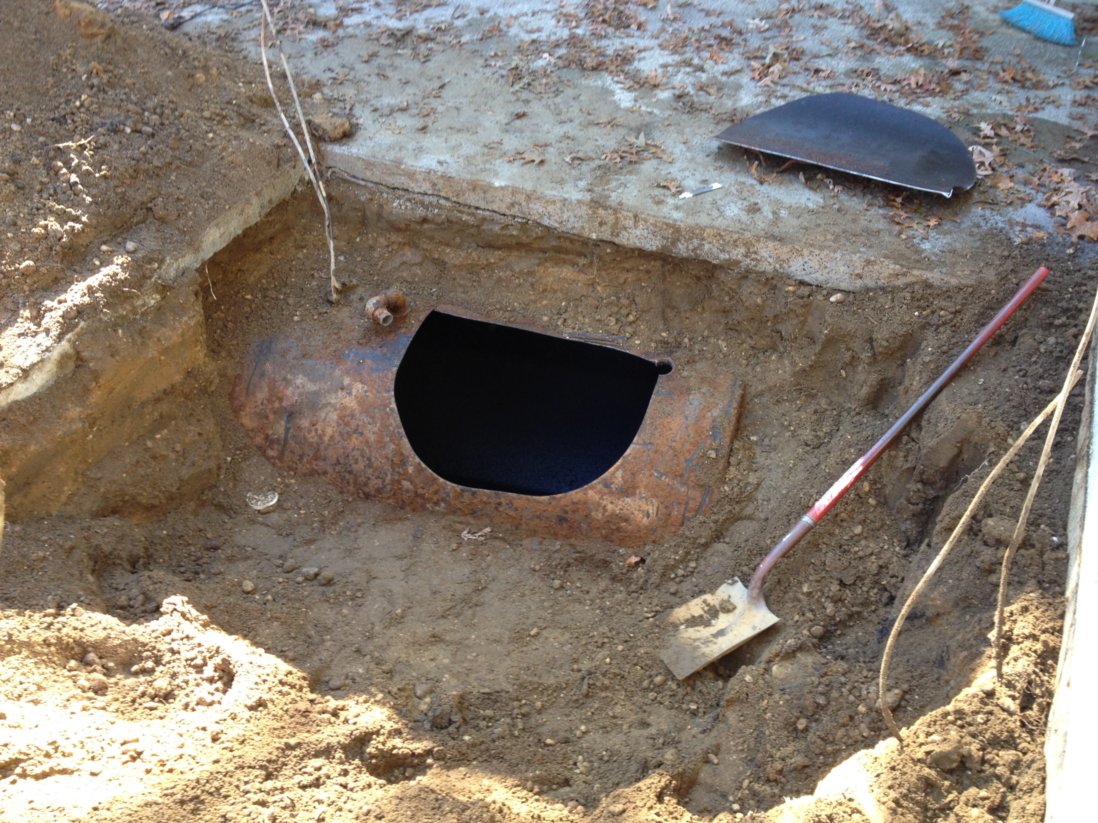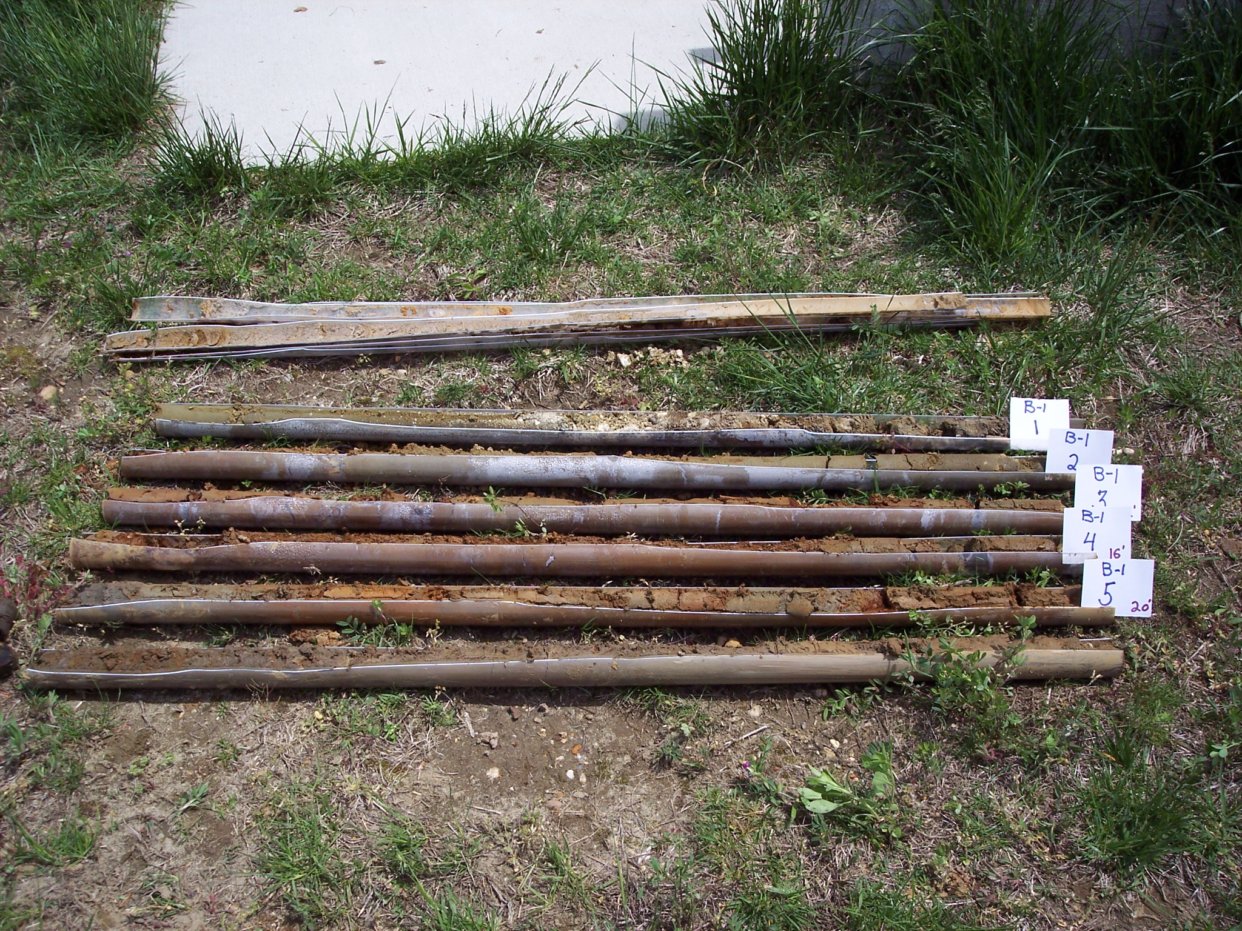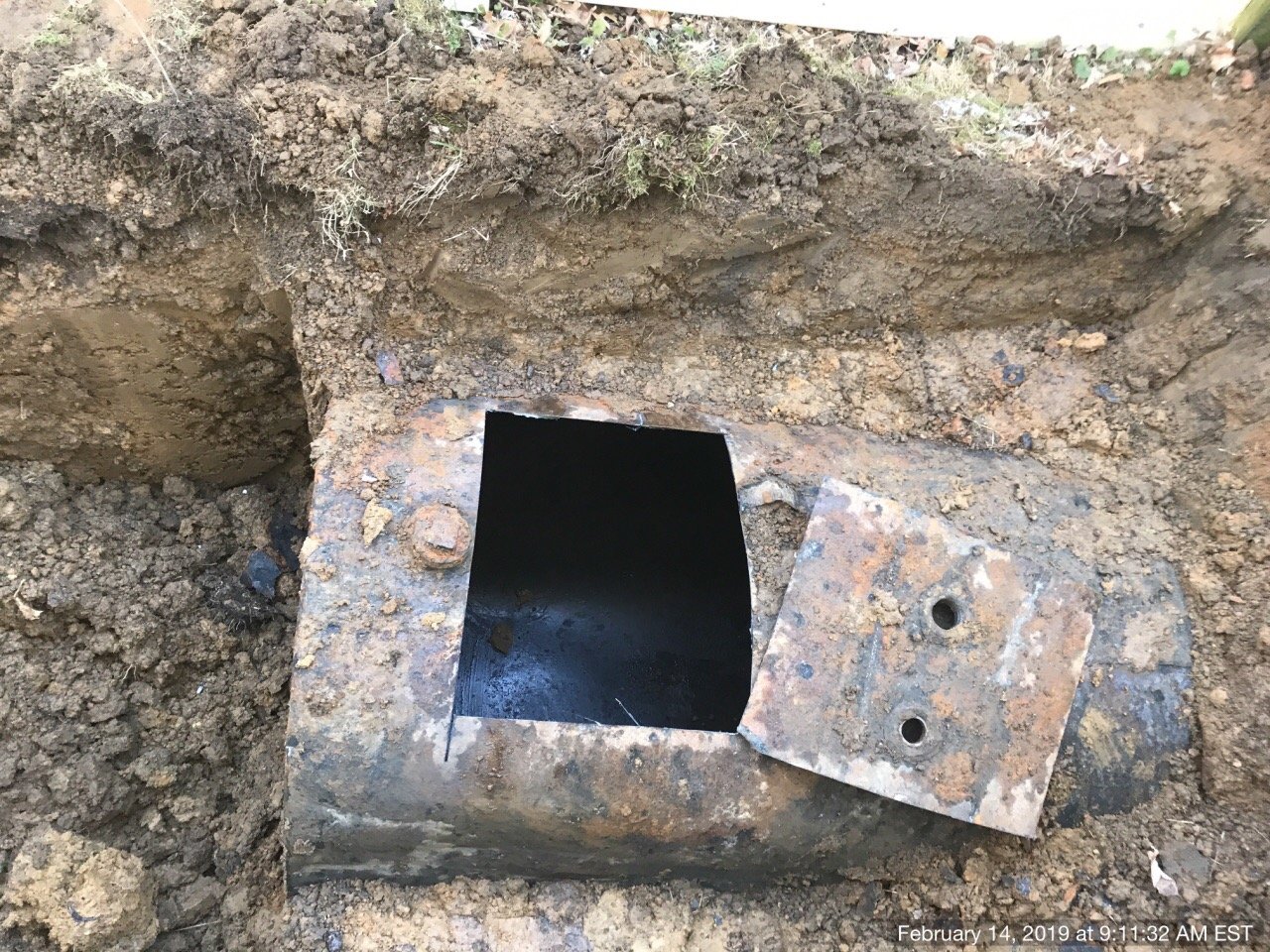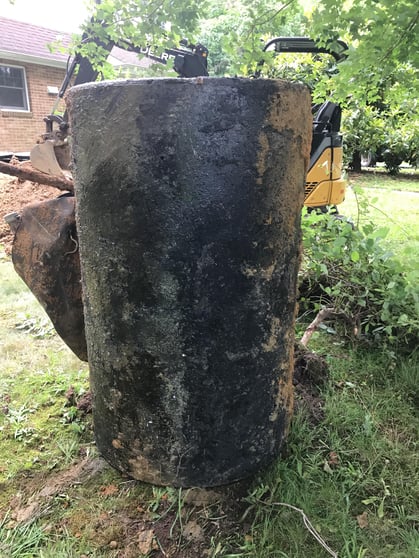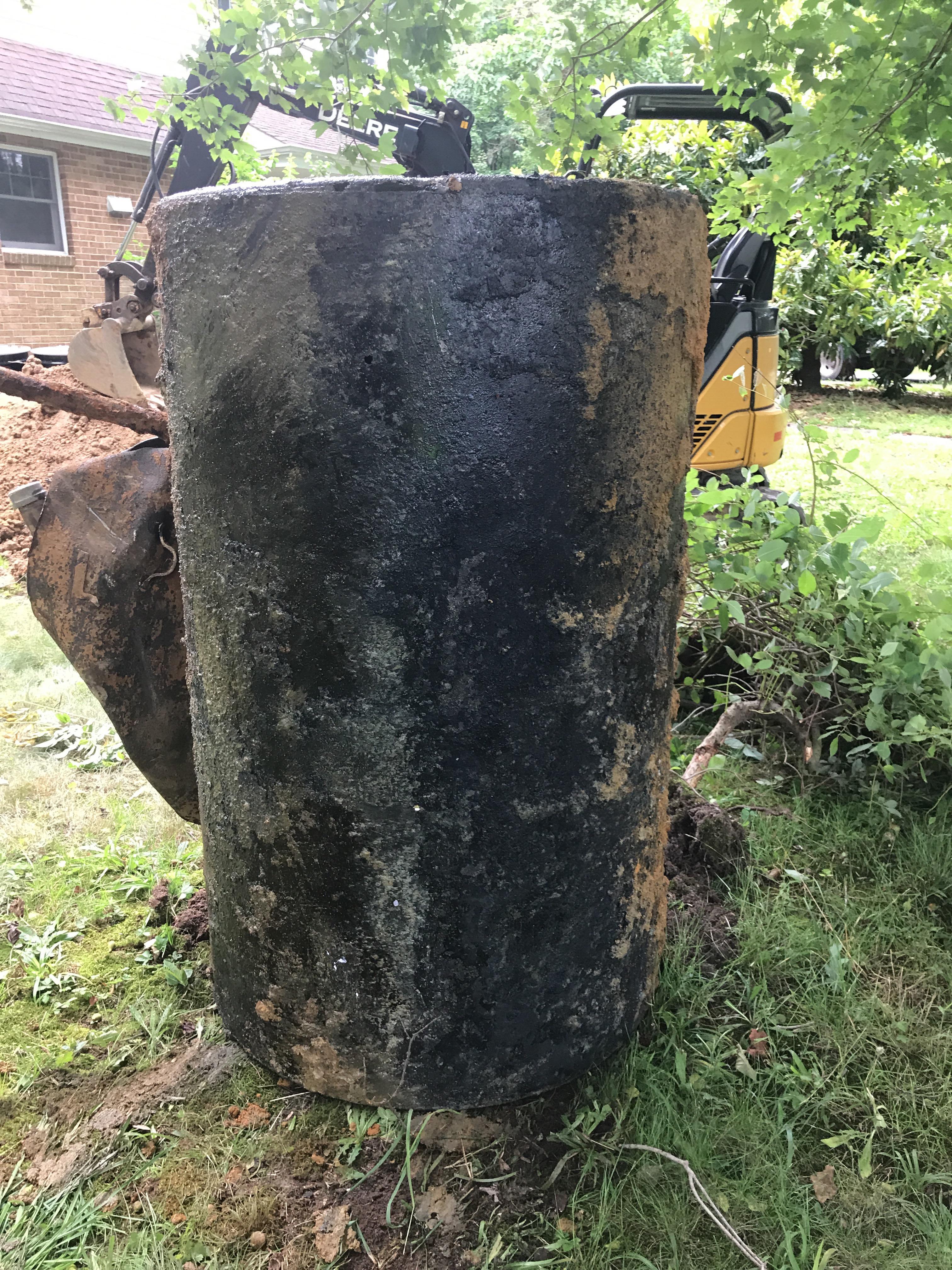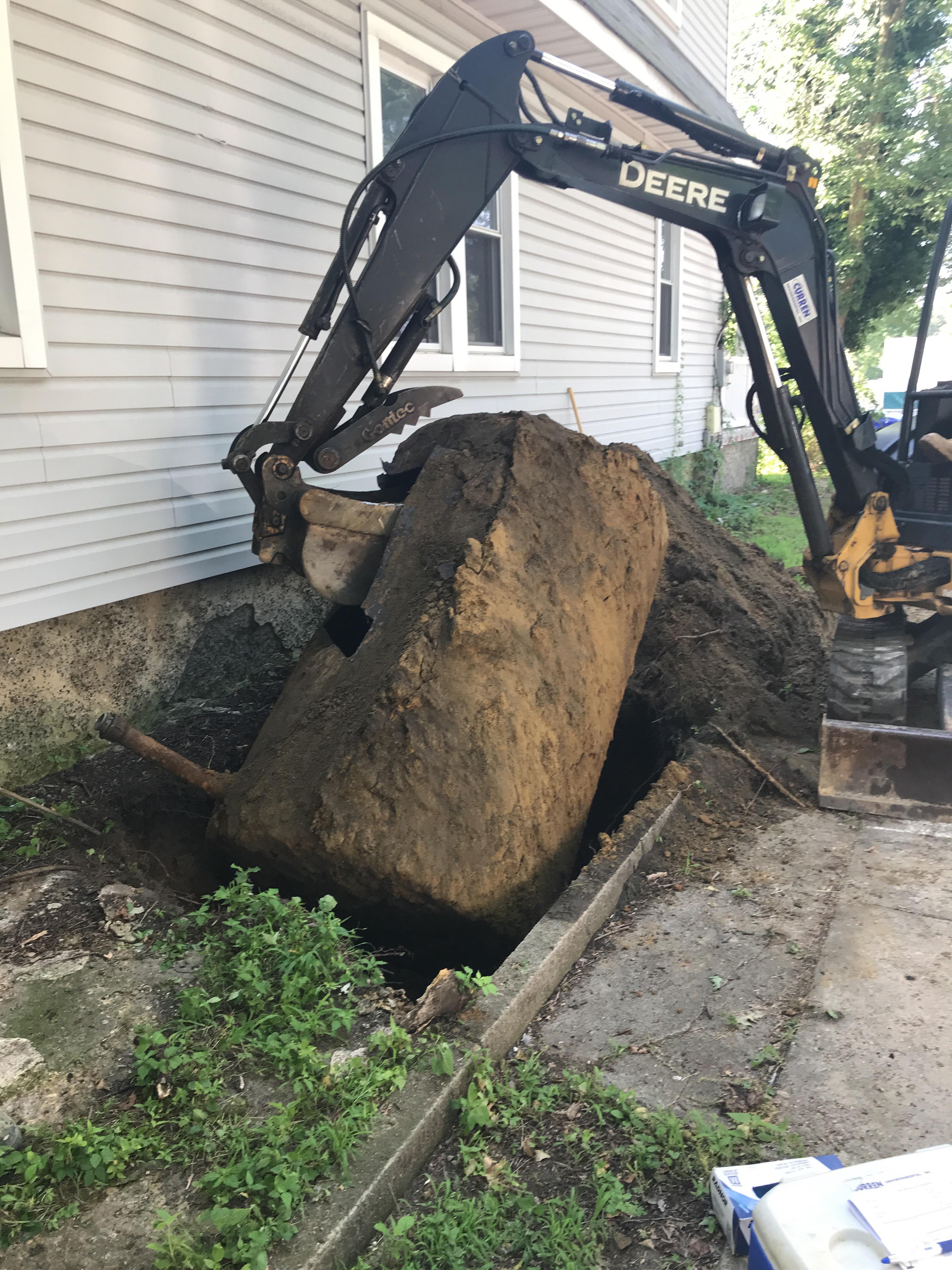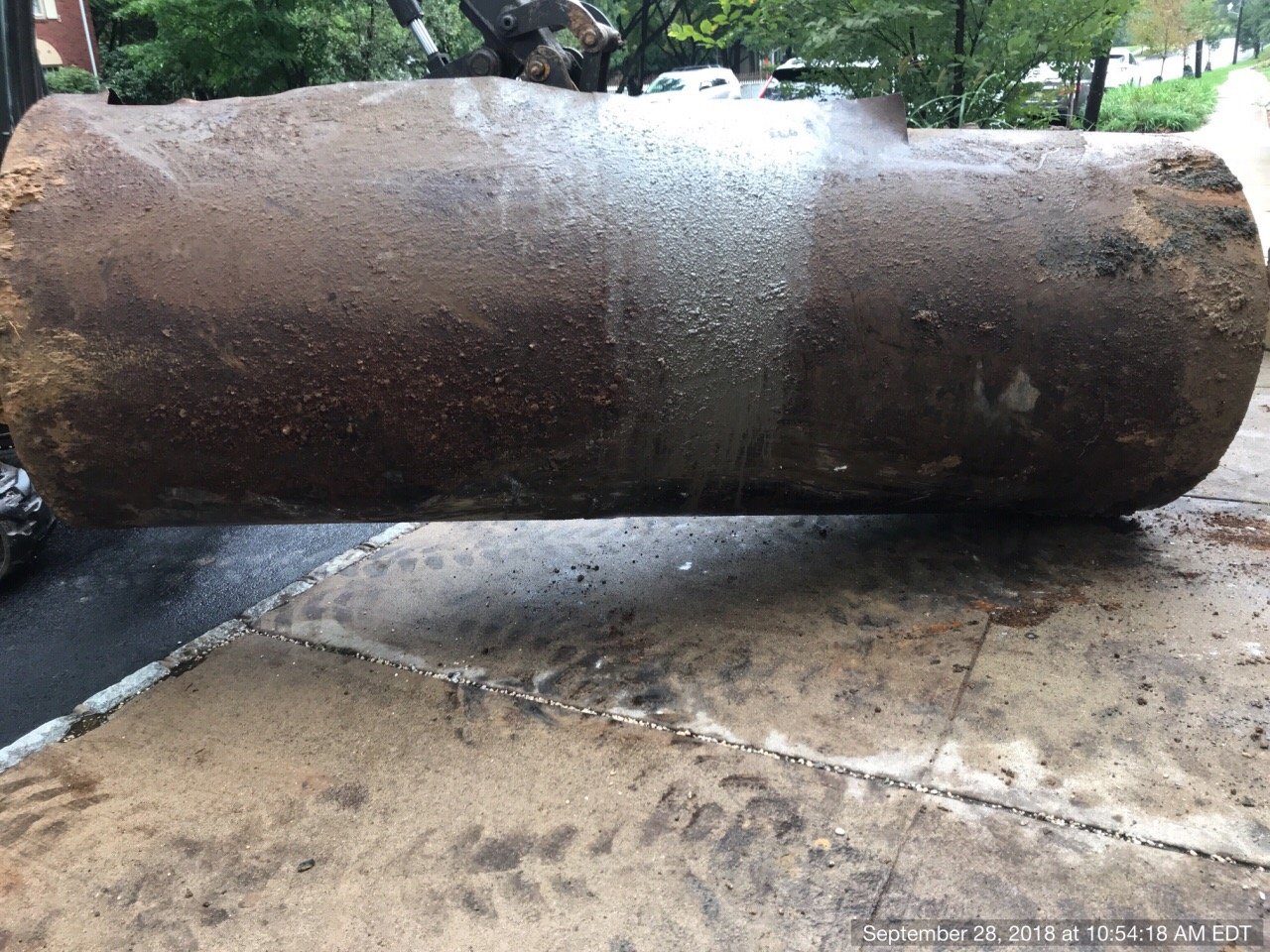How to remove an oil tank.
The northeast United States has a long history of oil heat. Oil tanks were commonly used starting in the early 1900s until the 1980s The EPA was not formed until 1970, so oil tanks and environmental regulations did not grow up together. Today the liability of oil tank leaks is well known and both buyers and sellers
The concern regarding an oil tank is any tank has a chance to leak. If a tank leaks, there can be a cleanup expense involved. This expense falls upon the owner of the property at the time of discovery. Try selling a house with an oil tank and learn that the buyers want a home not an oil tank leak. The fact is a new tank today has a 10-year warranty (yes there are tanks with longer warranties, but those are quite expensive), so nearly all tanks in use today have reached what would be considered a reasonable life expectancy. Couple that with the fact that if your tank is leaking, it most commonly happens along the very bottom of the tank where the most corrosion occurs, so you would never actually detect that the tank is leaking. Quite frankly, no tank owner is going to miss drips of oil from a tank.
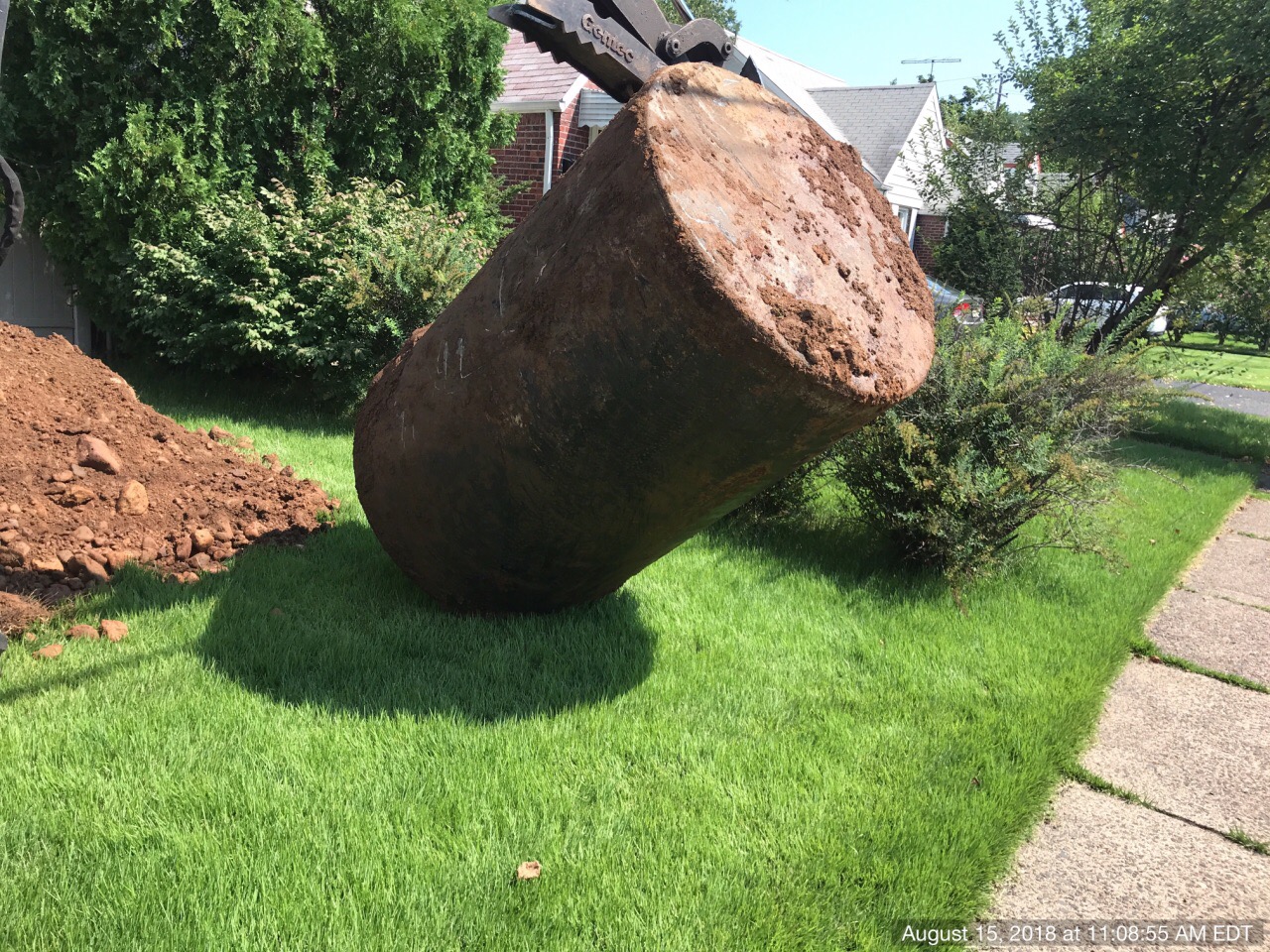
So, you have an old tank, a house you want to sell and a dilemma, do you remove the tank like a proactive reasonable person would do, or do you stick your feet in the sand and sell the house as is? Well rest assured your buyer has read this web site, or their attorney, or realtor has and they know the issues with oil tanks. We find a sale has to fall through 3 times or the house has to be on the market for 6 months or more before the seller accepts the fact that an oil tank is not as appealing as walk in closets and an open floor plan, buyers will take a hard pass.
So now the tank owner is looking to have the tank removed. A little internet search or a reference from someone leads them to a company happy to remove the tank. Cheapest price, absolutely that is what they want. Does the removal company even discuss the possible outcomes of the tank leaking? No they don't, they don't want to scare you and quite frankly you don't want to be scared, you're a tank expert, you know your tank isn't leaking and hey oil comes from the ground and you're pretty good about recycling so you're a green person.
Let me point out some pitfalls about removing your oil tank.
The cheapest price includes the worst service and you will wind up paying more in the end, 90% of the time. The cheap person wants to find a leaking tank because that is where the big costs are. Read the tank contract, it will be brief, but it needs to include the following and most will not. We know this as we get many phone calls from people complaining about the firm that removed their oil tank.
Soil Sampling
You think you do not want it, but the buyer wants to know if the tank leaked how you know 100% is via soil testing. Like cholesterol, you do not know the levels unless you test.
You should always include sample acquisition and analysis with a tank removal. Samples on average cost $120.00 each or $240.00 on most tank removal sites. This is cheaper to do when you are on site to remove the tank. If you have to go back to the site and drill to obtain soil samples expect it to cost thousands. Sampling is even more important when a tank sweep is performed and a tank is found on a site, meaning, a tank that was not in use and not known to exist.
Hole found in the tank
Let us agree that things are not made to last forever, things wear out, is it really a shock to remove an oil tank that is 20, 30, 40, 50 years old and find a hole in it. I mean is that out of the realm of possibility? If you were not informed of this possibility, be prepared to be taken advantage of, tank leaks, not all of them but some. To manage expectations the company that removes your tank should explain what will happen if your tank does or does not leak. To be clear if there are holes in the tank, the local construction office will flag the tank as leaking and have you report the leak to the state. The reason being a hole in a tank is reasonable cause to believe that the tank leaked. So now, you are tasked with proving it did not leak or does not need remediation. In the meantime, the tank removal company will be giving you a quote that is many times more expensive to remediate the leak.
The tank had holes and you are told you must remediate.
If a tank leak is found you MUST test to see if levels are above or below standard. If you do not test than it is going to be assumed you must remediate, prepare to open your checkbook.
If you have a tank leak and you test and oil levels are so high that you need to remediate then your next real step is to define the area requiring remediation, this is called delineation.
Delineation is meant to define the area of contamination (and verify that contamination exists). Smaller areas are faster and less expensive to define, larger areas take longer. Larger areas can extend across property boundaries and below structures, which can require overcoming access issues regarding sampling these areas. The first step which maybe the only step required is sampling immediately around the tank area.

Tank Closure Report
Did you know that commercial tanks all require a report to be submitted to the state to document the work? Why, the state wants to know if the tank leaked. Therefore, every company is used to completing reports of tank removal work. Clearly, any tank raises questions with owners/purchasers of a property, so why wouldn't you want a report of removal? You do and you should have a report, when contract. These reports explain the work in laymans terms regarding the tank work and if there was a leak, it will also outline why you do or do not need remediation. Having a report documenting that a removed tank did not leak is an important document to have.
Bottom line, every tank needs a report documenting removal. Be it a leaking tank or a non leaker, if your contract makes no reference to any report, I wouldn't sign it.
Curren has completed thousands of tanks, one month we completed closure on 129 tanks. That said, we do not remove every tank in the tri-state area, but we get calls from property owners who hired someone else to remove their tank and they feel like they are being treated unfairly. Meaning they were unprepared to find that the tank leaked. In practice, I don't expect a property owner who has never removed an oil tank and never will again to be all knowing about the tank removals and tank leaks, but I expect the company performing the work to know and to clearly explain the process and the scenarios you can encounter.
The follow exert is from a tank removal contact from a company I would have run away from. Give it a quick read:
- Obtain necessary permit from municipality
- Phone in utility mark out to NJ One Call
- Excavate to expose tank
- Remove overburden soil covering UST
- Remove and dispose of concrete adjacent to UST.
- Saw cut the UST to allow for hand cleaning
- Properly clean the UST interior
- Remove the UST, and dispose of at a properly facility
This scope assumes the tank is not leaking. Bottom line the scope they gave was not meant to really satisfy you if the tank leaked, which was clearly a possibility. They don't even include soil sampling or a report so if the tank doesn't leak you don't get a report saying so. If the tank did leak, no sampling is include, which is so wrong, you need to test as every state allows a permissible amount of oil to remain, like cholesterol there are good and bad levels. How else do you know if you need to remediate?
We can only hope you are reading this before you get your tank removed. If so, call our office you will walk away a lot more informed and better prepared to manage this project. If you are calling after your tank was removed and it leaked, call us, we can discuss your options. Most leaking tanks will require the contamination to be delineated, which we do. We can define your problem, develop costs to remediate as well as data to you that you can solicit other quotes for remediation.
Monday to Friday 8:00 am to 5:00 pm 888-301-1050
